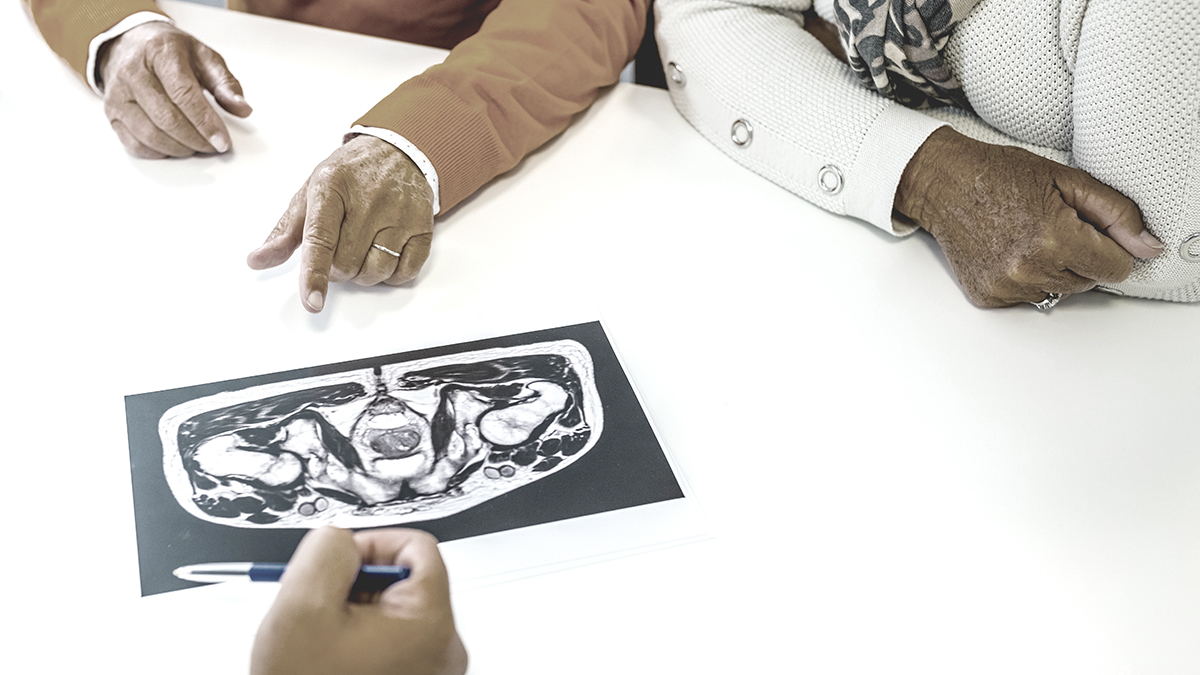Being diagnosed with prostate cancer can be a life-changing event. That’s why it’s so important to understand your treatment options. The process of discovering and diagnosing prostate cancer is different for every patient. Learn about some of the steps and options available to someone who has been diagnosed with prostate cancer.
What to do after prostate cancer diagnosis
Being well informed is a valuable weapon in the fight against cancer. With a diagnosis as serious as cancer, you owe it to yourself to be informed and consult with as many cancer experts as may be necessary to get multiple perspectives on your case.
Step 1: You’ve Received Your Diagnosis - Now What?
You are not alone. In the UK, about 1 in 8 men will be diagnosed with prostate cancer in their lifetime.1 Across the UK, more than 52.000 men are diagnosed with prostate cancer every year on average.1
At first, many patients need time to absorb their diagnosis. Many men also find support from their family, friends, community, and consider joining a support or advocacy group. When you are ready, you will need to choose your treatment team - one of the most important decisions you will make. Partnering with a team of experts in your specific type of cancer can aid you in your decision-making process and give you peace of mind.
Step 2: There's a lot to Consider
There’s no one-size-fits-all approach to prostate cancer treatment, and you should consult as many medical professionals as may be needed to assess what is best for you. Be sure to address all questions and/or concerns and discuss the potential side effects associated with each treatment option. Factors such as age, stage of cancer, and other health conditions are important factors to keep in mind.
Step 3: Getting a Second Opinion
It is perfectly fine, and even encouraged to get a second or third opinion. Getting more than one opinion can help confirm your diagnosis, provide a different perspective and potentially present other treatment options so that you are fully informed before making a decision. Prostate cancer can be very complex, and different healthcare and medical professionals may have different assessments and recommendations for the optimal treatment path for your situation
Below are three commonly used treatment courses.
![]()
Active Surveillance2
Active surveillance or watchful waiting is often suggested when prostate cancer is found in the early stages and is slow growing, low risk, associated with low PSA levels and just in the prostate.
Active surveillance closely monitors prostate cancer with routine ultrasounds, digital rectal exams, and prostate-specific antigen (PSA) blood tests. These tests can identify cancer growth or signs of progression.
If medical intervention is deemed necessary by your medical team, two common treatment options are surgery and radiation.
![]()
Surgery3*
A partial or radical prostatectomy is the removal of part or all of the prostate gland, as well as possibly some of the surrounding tissue. This option is most commonly used for men whose cancer is restricted to the prostate and those in the early stages of the disease.
Some possible side effects:
- Urinary incontinence (being unable to control urine)
- Erectile dysfunction (the inability to achieve or maintain an erection)
*SpaceOAR™ Hydrogel is not used with surgery
![]()
Radiation4
Prostate radiation therapy uses directed radioactive exposure, such as high-energy X-rays, to kill cancer cells and surrounding tissues. Due to the rectum being in close proximity it may be exposed to radiation that is targeted for the prostate.
Some possible side effects:
- Bowel dysfunction (associated with diarrhea, blood in stool, and stool leakage)
- Urinary Dysfunction (the need to urinate more often, have a burning sensation while you urinate, blood in your urine, or urinary incontinence)
- Erectile dysfunction (the inability to achieve or maintain an erection)
Find out more about SpaceOAR Hydrogel
![]()
![]()
![]()
This article is not intended to replace professional medical care or advice. If you have any questions or need additional information, please talk with your doctor.
References
1. https://prostatecanceruk.org/prostate-information-and-support/risk-and-symptoms/about-prostate-cancer Accessed August 2023
2. Observation or Active Surveillance for Prostate Cancer. American Cancer Society. http://www.cancer.org/content/cancer/en/cancer/prostate-cancer/treating/watchful-waiting. Accessed February 17, 2020.
3. Surgery for Prostate Cancer. American Cancer Society. https://www.cancer.org/cancer/prostate-cancer/treating/surgery.html. Accessed February 17, 2020.
4. Radiation Therapy for Prostate Cancer. American Cancer Society. https://www.cancer.org/cancer/prostate-cancer/treating/radiation-therapy.html. Accessed February 17, 2020.
SpaceOAR Hydrogel is intended to temporarily move the rectal wall away from the prostate during the course of radiotherapy treatment for prostate cancer, and in creating this space it is the intent of SpaceOAR Hydrogel to reduce the radiation dose affecting the rectum.
SpaceOAR Hydrogel contains polyethylene glycol (PEG). As with any medical treatment, there are some risks involved with the use of SpaceOAR Hydrogel. Potential complications associated with SpaceOAR Hydrogel include, but are not limited to: pain associated with injection, pain or discomfort from the hydrogel, site inflammation, infection (including abscess), inability to urinate, urgent need to urinate, constipation, rectal muscle spasm, damage to lining of rectum, ulcers, fistula (a hole between rectum and bladder, urethra, or skin below the scrotum), perforation (hole in prostate, bladder, urethra, rectum), necrosis (dead tissue), allergic reaction (local reaction or more severe reaction, such as anaphylaxis), embolism (blood vessel blockage is possible and may happen outside of the pelvis, potentially impacting vital organs or legs), fainting, and bleeding. Please talk to your doctor about the risks and benefits related to using SpaceOAR Hydrogel. If one or more of these complications occur, you may need medical treatment or surgery. URO-1288805-AA APR 2022
CAUTION: The law restricts these devices to sale by or on the order of a physician. Indications, contraindications, warnings and instructions for use can be found in the product labeling supplied with each device. Information for use only in countries with applicable health authority registrations. This material not intended for use in France.
Products shown for INFORMATION purposes only and may not be approved or for sale in certain countries. Please check availability with your local sales representative or customer service.




